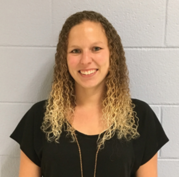 First Global-Ready School Districts Recognized
Global education has been a focus of the State Board of
Education since 2011 when members formed a Task Force on Global Education, and
this month, two school districts were the first to receive Global-Ready
designations: Charlotte-Mecklenburg Schools and Onslow County Schools.
In 2013, the Board made five commitments to help ensure that
students graduate from high school prepared to live, work and contribute in an
interconnected, global world. These commitments – teacher support and tools,
leading-edge language instruction, new school models, district networking and
recognition, and strategic international relationship – have led to a new focus
on global education and recognition efforts to encourage and highlight
educators and schools that are global-ready.
|
School Environment and Engagement Measures
Improved in
2015-16
The number of school crimes,
long-term suspensions, expulsions, corporal punishment and high school dropouts
went down in 2015-16. The only measure included in the annual Consolidated Data Report that increased
was short-terms suspensions, according to data presented in February.
The number of school crimes
decreased 3.2 percent to 10,020, and the acts per 1,000 students decreased to
6.62 acts per 1,000 students. The most frequently reported acts involved
illegal possession of controlled substances, alcoholic beverages and weapons (excluding
firearms or powerful explosives), and assault on school personnel. These four
offenses accounted for 96.3 percent of the reported acts.
Short-term suspensions
increased by 4 percent. There were 216,895 short-term suspensions reported.
Corporal punishment has
continued to decline as a tool educators use to manage student behavior. Four
districts reported using corporal punishment 73 times in 2015-16, mostly in
response to disruptive behavior, aggressive behavior and insubordination, and
leaving school. The number of districts using corporal punishment has steadily
declined over the past decade.

2016 Healthy Active Children Policy Report
Presented
Why should educators be
concerned about students’ health and physical activity level? Research shows
that active students are 20 percent more likely to earn an A in mathematics or
English, more likely to stay on task and not require teachers to spend time
managing their behavior, and more likely to read above their grade level.
These are just a few of the
reasons that the State Board of Education has had a focus for several years on
healthy active students. The State Healthy Active Children Policy Report includes
local School Health Advisory Councils; the encouragement of the Whole School,
Whole Community, Whole Child Model; a focus on local wellness policies;
physical education and healthful living; physical activity and recess;
nutrition services, education and promotion; and policy monitoring.
This month, the State Board
received its annual report on this topic showing that in 2016, all 115 school
districts in North Carolina had School Health Advisory Councils (SHAC) and more
than half of them met at least quarterly.
Following are some key points related to how SHACs
are working in local schools and districts:
• 40 percent of districts reported that all of
their elementary schools provide 150 minutes of weekly physical education with
a certified PE teacher.
• 52 percent report that all of their middle
schools provide 225 minutes of weekly healthful living with certified health
and PE teachers.
• Districts report that they use the Youth Risk
Behavior Survey and the School Health Education Profiles to help set health
priorities.
• Districts say that their top areas of focus
are physical activity, nutrition, mental health/counseling/social work, and
ensuring a safe school environment.
• The concussion and head injury policy now
includes all students – athletes or not – who suffer a concussion in the Return
to Learn provision.
• The local wellness policy now includes school
meal nutritional analyses and guidelines posted monthly on district websites,
at least 20 minutes for lunch and water availability to all students during the
day.
|
 Pre-Kindergarten Makes a Difference, Yet is Unevenly
Provided
Overall, students who participate in strong Pre-K programs
have higher achievement test scores, lower levels of special education
identification and grade repetition, higher graduation rates, fewer behavior
problems, and increased employment with higher earnings and reduced welfare
dependency.
The economic return on investment has been shown to be as high as
$16 for every dollar invested in Pre-K, according to a study on costs and
effectiveness of Pre-K programs required by 2016 legislation and completed by
the Departments of Health and Human Services and Public Instruction. These
positive results are greatest for children who are the most at risk of poor
school performance, and were seen to hold steady after the Pre-K years are
over.
Funding for Pre-K is not comprehensive or evenly applied at
present, however. Depending on the type of location and provider, costs per
student vary from $9,088 to $9,197, and state funding ranges from covering 72
percent of the cost (for private child care providers) to 46 percent of the
cost (for Head Start). To cover the full actual cost for these 27,019 students
enrolled would cost approximately $49 million or $1,800 per slot.
Recommendations of the report included a second study to collect more
information on revenues that support NC Pre-K by type of setting; possible
increases to the administrative cost cap; options to better define how
administrative funds can be used; and consideration of state resources that may
be used to offset local administrative costs.
|
Mentor
Teacher Requirements Updated
Beginning teachers benefit from the guidance of mentor teachers as they
master the essentials of being a successful classroom teacher. This expectation
has been in place for many years, and in February the Board approved changes to
its policies about beginning teachers and mentors.
The changes, which reference
back to NC General Statutes 115C-296(e), note that school districts are to
select excellent, experienced and qualified teachers to serve as mentors. Under
the revised policies, mentor teachers must be rated at least at the
“accomplished” level on the NC Educator Effectiveness System. This level
requires ratings of accomplished or higher on three of the five standards to
include Standard 4 on the most recent summative evaluation. Mentor teachers
must have met expectations for student growth.
Once a mentor has been assigned
to a beginning teacher, the teacher may continue to serve as that beginning
teacher’s mentor throughout the beginning teacher’s three-year support program.
 2016 Milken Educator Award Winner Recognized
Amanda Robertson, a fourth grade mathematics teacher at
Jones Intermediate School in Mount Airy City Schools, is the 2016 NC Milken
Educator Award Winner and was recognized at the February Board meeting.
Robertson received this honor last fall at a surprise school assembly,
receiving a check for $25,000 to spend as she pleases. Robertson, who has
taught for eight years and was recently named Mount Airy Teacher of the Year,
joined up to 35 other educators nationwide to win the award this year.
Milken recipients are chosen on the basis of educational
talent as demonstrated by effective instructional practices, student learning
outcomes, and exemplary educational accomplishments outside the classroom that
provide models of excellence for the profession. The award focuses on
early-to-mid-career educators who offer strong, long-term potential for professional
and policy leadership.
Career and Technical Education Administrator and Teacher of
the Year Honored
February is Career and Technical Education Month, and this
year the Board marked that month by honoring two CTE educators.
Lee O’Neal, DPI Regional Coordinator for the North Central
Region, is the CTE Administrator of the Year. Michael Holman, a teacher at East
Chapel Hill High School, Chapel Hill-Carrboro Schools, is the CTE Teacher of
the Year.
|
|